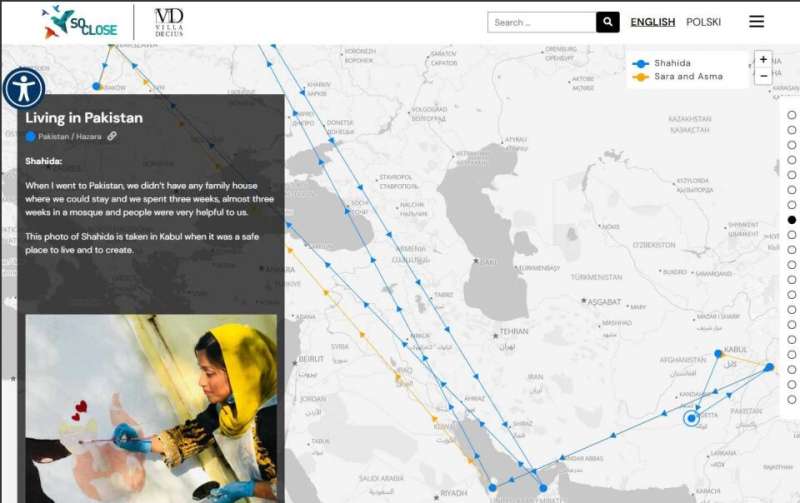Digital tools building bridges between local communities and forced migrants

Throughout history and across the globe, individuals have been forced to flee conflicts, natural disasters and political oppression. An experience of trauma and new horizons that is at once both collective and individual. Researchers at Lund University have developed digital tools that facilitate deeper contact between local communities and forced migrants. The tools can be used by museums and cultural associations, and have already been tested in Greece, Spain, Poland and Italy.
“What makes our research project different is that we are not focused solely on the refugees’ stories, we also involve the local community. There are many parts of Europe that have a long history of forced migration. That means that the refugees that have lived in an area for a long time have much in common with those arriving today. We wanted to focus on that exchange since we think that it can create a greater mutual respect between groups,” says Anamaria Dutceac Segesten, senior lecturer in European Studies at Lund University.
The tools have been tested by refugees and cultural organizations
The tools, which include a story map, an online documentary film and a virtual exhibition, have been tested in countries that have a long history of forced migration: Italy, Greece, Spain and Poland. For example, the participating organization active in Marzabotto, outside Bologna in Italy (Monte Sole Peace School) has created a story map upon which stories from those forced to flee within Italy during the Second World War are shown side by side with the experiences of refugees who have arrived in the city recently, from Benin and Ghana.
The organization in Athens (the Greek Refugee Forum) produced a virtual exhibition of films made by Iraqi refugees. In the films, they reflect on their situation in a refugee camp on the island of Trikeri, using archive material of a jail for female political prisoners imprisoned in the 1950s as their starting point. This material also features in the exhibition.
Theme and geographical location can be highlighted
“Organizations may choose to mix experiences in different ways, in order to reflect a theme, as in Greece, or the events in a geographical location, as in the case of Marzabotto. One can upload a great many stories, and use images, text, maps and video,” says Anamaria Dutceac Segesten.
All the tools have been designed in collaboration with the refugees whose stories are now included in the various platforms. The aim of the project was to develop tools that make it easy for refugees to tell their stories in a personal way.
“As the work progressed, we noticed that life experience and age have a huge bearing on how people want to work with the tools. An older person looks to upload old photo albums, while a musician prefers to tell the story of his life through songs. A gamer would rather present their life as a computer game. For all groups, the mobile phone was the most important piece of technology when it comes to documenting their life,” says Anamaria Dutceac Segesten.
Endless possibilities for communication
Anamaria Dutceac Segesten and her colleagues now hope that different associations and organizations will want to use the tools. For the intended target groups, this could cover everything from children and school pupils to local associations, refugees and an interested public. It all depends on what material the organizations choose to exhibit.
“The way I see it, the possibilities are endless. Above all, I would like these tools to be useful for smaller associations and museums. Perhaps a local exhibition in which the experiences of second-generation immigrants in Malmö are mirrored in the way Ukrainian refugees experience daily life in Sweden?”
Eventually the tools will be evaluated: how was the story map received in Bologna; what was it like producing the virtual exhibition in Athens, or the online documentary in La Jonquera in Spain?
“As a researcher, I am interested in testing our hypothesis about exposing different groups with experience of forced migration to each other’s stories. Could that be a way of conveying empathy? And can our tools actually bring benefits?” wonders Anamaria Dutceac Segesten.
Citation:
Digital tools building bridges between local communities and forced migrants (2023, January 13)
retrieved 13 January 2023
from https://phys.org/news/2023-01-digital-tools-bridges-local-communities.html
This document is subject to copyright. Apart from any fair dealing for the purpose of private study or research, no
part may be reproduced without the written permission. The content is provided for information purposes only.
For all the latest Science News Click Here
For the latest news and updates, follow us on Google News.

